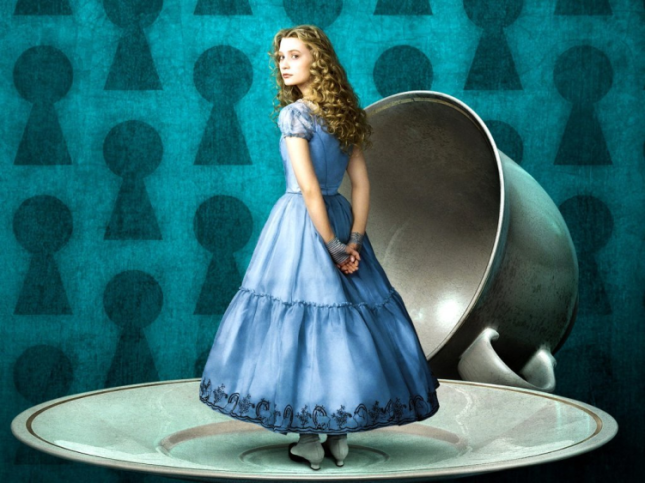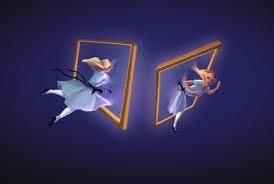Many people, including theists are under the deluded logic that Adolf Hitler was an atheist. Atheism does not claim for any superior morality, it only defends it and proved that it is not a position of immorality.
Atheism is in correlation to Darwinism even though atheism predates evolution, or at least deism. Darwin’s work was not taught in Germany, all of the great modern atheists Einstein, Darwin, were appalled by the national socialist regime.
If theology was to make the claim that Hitler’s inspiration was atheist based, then why is it that in the first chapter of Mein Kampf he says he’s doing God’s work by annihilating the Jews? To quote the book exactly he says “hence today I believe that I am acting in accordance with the will of the almighty creator: by defending myself against the Jew, I am fighting for the work of the lord.”
Why is it that on that on the belt buckle of every Nazi soldier it stated ‘Gott Mitt Uns’ (God on Our Side)? Why is it that every officer had to take an oath, making Hitler into a minor God by swearing ‘In the name of almighty God, my loyalty to the Führer’?
Hitler is depicted by many as a pagan polytheist at least – not exactly a conventional theist but still a theist. Atheist websites routinely claim that Hitler was a Christian because he was born Catholic, he never publicly renounced his Catholicism, and he wrote in Mein Kampf, “By defending myself against the Jew, I am fighting for the work of the Lord.” Atheist writer Sam Harris writes that “the Holocaust marked the culmination of…two hundred years of Christian fulminating against the Jews” and therefore “knowingly or not, the Nazis were agents of religion.”
Every European country, even Germany, had those who did not believe in the Nazi ideology and who were willing to die for their beliefs. Perhaps no other group stood so firmly in their beliefs as the Jehovah’s Witnesses. Hitler felt particularly threatened by this strong group of Christians because they, from the very beginning, refused to recognize any God other than Jehovah. When asked to sign documents of loyalty to the Nazi ideology, they refused. Jehovah’s Witnesses were forced to wear purple armbands and thousands were imprisoned as “dangerous” traitors because they refused to take a pledge of loyalty to the Third Reich.
In his rhetoric, Hitler also fed on the old accusation of Jewish Deicide. Because of this, it has been speculated that Christian anti-Semitism influenced Hitler’s ideas, especially such works as Martin Luther’s essay ‘On the Jews and Their Lies’. Luther, much quoted by Hitler, describes the Jews as “…a base, whoring people, that is, no people of God, and their boast of lineage, circumcision, and law must be accounted as filth…” Also, “They are full of the devil’s faeces … which they wallow in like swine…”. He states that their synagogues, schools and prayer books should be set on fire and destroyed, that Rabbis should be forbidden to preach, and that their property and money should be confiscated. He also seems to defend their murder, writing “We are at fault in not slaying them.” In fact, the Nazis scheduled the ‘Kristallnacht’ (‘Crystal Night’) in honor of Martin Luther’s birthday.
Also the writings of Paul de Lagarde are said to have influenced Hitler. He insisted that the Jews were “pests and parasites who should be destroyed as speedily and as thoroughly as possible.”
Also, in support of this view, John Toland opines that Hitler “carried within him its teaching that the Jew was the killer of God. The extermination, therefore, could be done without a twinge of conscience since he was merely acting as the avenging hand of God…” Nevertheless in Mein Kampf, Hitler writes of an upbringing in which no particular anti-Semitic prejudice prevailed.
In 1936, a Roman Catholic cardinal named Michael von Faulhaber met Hitler at Berghof for a meeting. He left entirely convinced that Hitler was “deeply religious” and stated “The Reich Chancellor undoubtedly lives in belief in God. He recognises Christianity as the builder of Western culture.”
If theists were to claim that Hitler had atheist beliefs, why is it that Hitler made several statements against atheism? For example, in a speech in Stuttgart on the 15th of February 1933, Hitler stated: “Today they say that Christianity is in danger, that the Catholic faith is threatened. My reply to them is: for the time being, Christians and not international atheists are now standing at Germany’s fore. I am not merely talking about Christianity; I confess that I will never ally myself with the parties which aim to destroy Christianity. Fourteen years they have gone arm in arm with atheism. At no time was greater damage ever done to Christianity than in those years when the Christian parties ruled side by side with those who denied the very existence of God. Germany’s entire cultural life was shattered and contaminated in this period. It shall be our task to burn out these manifestations of degeneracy in literature, theater, schools, and the press—that is, in our entire culture—and to eliminate the poison which has been permeating every facet of our lives for these past fourteen years.”
For a time Hitler advocated positive Christianity, a militant, non-denominational form of Christianity which emphasized Christ as an active preacher, organizer, and fighter who opposed the institutionalized Judaism of his day. Positive Christianity purged or deemphasized the Jewish aspects of Christianity and was infused with aspects of nationalism and racial anti-Semitism. Hitler never directed his attacks on Jesus himself, whom Hitler regarded as an Aryan opponent of the Jews. Hitler viewed traditional Christianity as a corruption of the original ideas of Jesus by the Apostle Paul. In Mein Kampf Hitler writes that Jesus “made no secret of his attitude toward the Jewish people, and when necessary he even took the whip to drive from the temple of the Lord this adversary of all humanity, who then as always saw in religion nothing but an instrument for his business existence. In return, Christ was nailed to the cross.” In a speech 26 June 1934, Hitler stated:
“The National Socialist State professes its allegiance to positive Christianity. It will be its honest endeavour to protect both the great Christian Confessions in their rights, to secure them from interference with their doctrines (Lehren), and in their duties to constitute a harmony with the views and the exigencies of the State of today.”
Hitler made various other statements attacking atheism such as in a radio address in 1933, he stated: “For eight months we have been waging a heroic battle against the Communist threat to our Volk, the decomposition of our culture, the subversion of our art, and the poisoning of our public morality. We have put an end to denial of God and abuse of religion. We owe Providence humble gratitude for not allowing us to lose our battle against the misery of unemployment and for the salvation of the German peasant.”
Furthermore, Hitler made a statement during a speech made, during negotiations leading to the Nazi-Vatican Concordant on April 26th 1933, against secular schools. He stated: “Secular schools can never be tolerated because such schools have no religious instruction, and a general moral instruction without a religious foundation is built on air; consequently, all character training and religion must be derived from faith …we need believing people.”
Hitler also supported the consent of the Catholic Church for a Croatian death camp, also known as the Jasenovac concentration camp, during World War II. Although the camp was not directly operated by Germans, their influence led to Jasenovac being ran similarly to all other extermination camps in Europe – With the aim to contribute to the Nazi “final solution” to the “Jewish problem”, the killing of Roma people and the elimination of political opponents, but the most significant purpose for Jasenovac was to achieve the destruction of the Serbian population of the new independent Croatia, NDH (Nezavisna Država Hrvatska).
Within months of creating their “independent state” of Croatia, the leaders made clear what this new Catholic nation was all about. On the 2nd of June 1941, in Nova Grarfiska, Dr. Milovan Zanitch, Minister of Justice, stated: ‘This State, our country, is only for the Croats, and not for anyone else. There are no ways and means which we Croats will not use to make our country truly ours, and to clean it of all Orthodox Serbs. All those who came into our country 300 years ago must disappear. We do not hide (that) this (is) our intention. It is the policy of our State, and during its promotion we shall do nothing else but follow the principles of the Ustashi.”
In a speech given in Gospic on June 6, 1941, Mile Budak, the Ustasha Minister of Education and Cults, revealed and explained the policy of genocide against the Orthodox Serbs as follows: “One-third of the Serbs we shall kill, another we shall deport, and the last we shall force to embrace the Roman Catholic religion and thus melt them into Croats.”
The deniers of the Catholic Church’s input in the holocaust are so numerous that there is hardly a Roman Catholic in a million, no matter how educated, who is even aware of the atrocities within the Roman Catholic country of Croatia in the name and under the leadership of their own Catholic commanders.
The Catholic Church ever since the holocaust, as well as the German public, almost live in shame at the Roman Catholic based atrocity. A lot of Christians are holocaust deniers due to the regime that their religion allowed Hitler to do wicked things because Gods’ word was on the page suggesting so. Holocaust denial is explicitly or implicitly illegal in 17 countries: Austria, Belgium, Canada, Czech Republic, France, Germany, Hungary, Israel, Liechtenstein, Lithuania, Luxembourg, Netherlands, Poland, Portugal, Romania, Slovakia, and Switzerland. The European Union’s Framework decision on Racism and Xenophobia states that denying or grossly trivializing “crimes of genocide” should be made “punishable in all EU Member States”. Many people have been imprisoned for the denial of this genocide such as David Irving who came to prominence in the media as a holocaust denier although he refers to his work as ‘Historical Revisionism’ which is merely an interpretation based view of history rather than actuality. David Irving is regarded as “the most skillful preacher of Holocaust denial in the world today”. He has written many books about the subject and was sentenced to three years imprisonment in Vienna.
A lot of people, like the late Christopher Hitchens and Peter Singer, Noam Chomsky think that his is an immoral act. The reason for this is because they do not want to censorship ‘free speech’ unlike said laws. The misinterpretation of the statements and news features that Christopher, Peter and Noam have appeared in is that they too have been accused for holocaust denial for defending the free speech act that David Irving embraced on. All of them do not agree with Mr. Irving’s views on holocaust denial in any way, but they highly discredit the totalitarian law which says you cannot think of such a thing because it offends so many people, mainly survivors.
So the main controversy in conclusion to that is; even in the most extremely offensive cases, should someone be held in contempt for thinking something and writing words on paper? Like the fatwa that was issued on Salman Rushdie for example.
Author: Faye Mestre















